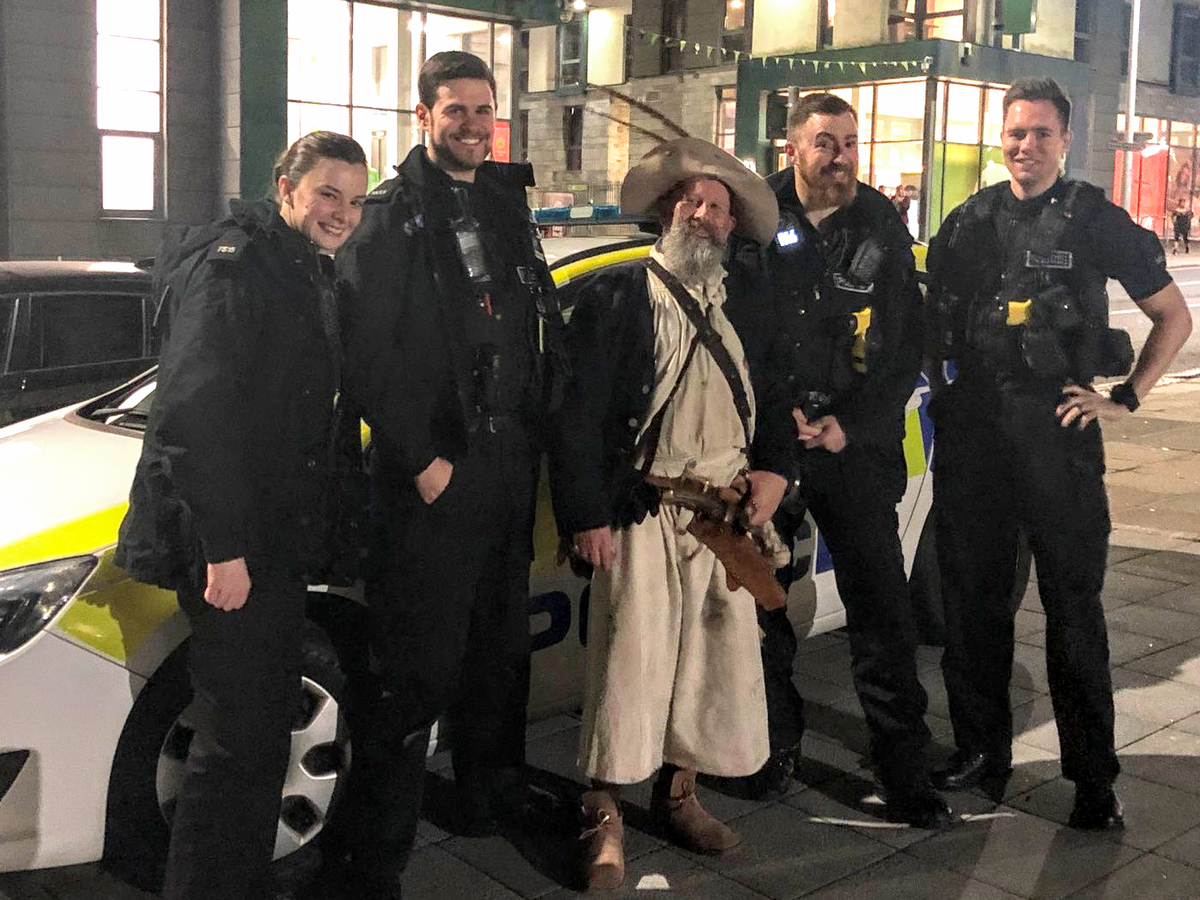At 10:15pm, the Police in Plymouth on the south coast of Devon in England, were called by concerned members of the public when they saw a man carrying a gun.
Armed response teams were making preparation and loading their own weapons while response officers armed with tasers, conducted a search of the area around Midland House in Notte Street in Plymouth.
When they finally located their suspect, a rousing round of Yo-ho-ho, and a bottle of rum rang out as the police discovered their alleged perpetrator was a pirate!
This pirate was not on some dastardly mission to smuggle goods or raid a local bank – he was a film extra on his way to a function at the Maritime Inn on the Barbican.
Just had one of THOSE jobs to start. Male in a building U/C, with a large saw & a suspected gun. Initially deployed to speak with the R/P & for containment whilst firearms kit up towards. Cue or relief and laughter when it’s a film extra dressed as a pirate!!! 🤦🏼♂️😅🏴☠️ log 812 pic.twitter.com/7OIeUEShdX
— Plymouth D Section Response (@DsectionPlym) February 27, 2020
That evening a function had been arranged at the Maritime Inn to celebrate a successful day’s shooting of an episode of Britain’s Most Historic Towns television series for Channel 4. Invited to this function were several pirates.
In the series, Professor Alice Roberts explores the history of the British Isles, through stories associated with specific towns.
A tweet from Professor Roberts, earlier in the evening, from the Maritime Inn, showed the gathering.
The photograph showed a group of extras and pirate-fans, many in costume, that had gathered to hear a band, The Jolly Rogers, well known in the Westcountry, perform and to enjoy a few pints together.
The official police report stated, “Police were called to Midland House on Notte Street at around 10.15pm on Thursday 27th February, following reports of a man with a weapon, namely a meat saw and a pistol. On arrival, officers found that the incident was, in fact, just actors in costume taking part in filming for a television production, so all units were stood down.”
An associate professor of maritime history at the University of Plymouth, Elaine Murphy, also tweeted about the topic of the television series episode for Plymouth. She showed herself, along with Professor Roberts, at The Box museum.
There they were looking at an Elizabethan document dated 1587, along with figureheads from a ship that can be seen in the ‘Tudor piracy and Drake’ exhibit.
History of Plymouth
The earliest recorded mention of Plymouth comes from the Domesday Book in 1086. Here there is mention of Sudtone (South Farm) a settlement at the mouth of the Plym river.
This settlement later developed to become known as Sutton Harbour and the birth of Plymouth as a center for shipping and exploration.
Sir Francis Drake sailed from Plymouth. He was a hero in England but as a pirate in Spain. He was well known for attacking Spanish ships carrying treasure from their overseas colonies back to Spain.
Drake served under Queen Elizabeth I and could keep the treasure he collected after a portion was surrendered to the crown.
Also, from this port, the puritan pilgrims set sail in the Mayflower in 1620 for the New World. They had been persecuted for their religious beliefs and had set sail to find a new home in what would become the U.S.A.
More pirates! A sneak peek into the next series of Britain’s Most Hostoric Towns! #BMHT3 pic.twitter.com/cXtvxcqe5t
— Prof Alice Roberts (@theAliceRoberts) February 27, 2020
Captain James Cook led three voyages to the south seas from Plymouth. The first of these voyages took place in 1768, and he was the first explorer from Europe to reach Hawaii.
A little later in 1831, Charles Darwin sailed from Plymouth on his voyage to the Galapagos Islands, where he developed his revolutionary ideas about natural selection.
Since then, there have been many notable voyages from Plymouth, and in 1928 Plymouth was granted city status.
It has always been a center of importance for the British Navy.
Series 6 of Outlander is Looking for People to Join the Crew
They sailed forth, under Sir Francis Drake, to demolish the Spanish Armada in 1588, and the Navy has maintained a presence in the city to the present day. The police went home happy.
